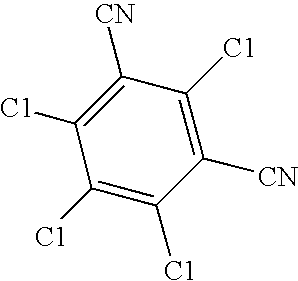Waste fluid or waste water treatment method and its apparatus
a technology of waste water treatment and waste fluid, which is applied in the nature of treatment water, manufacturing tools, separation processes, etc., can solve the problems of generating chlorine gas, insufficient treatment by bio-treatment methods or absorption methods that have been previously widely used, and the need for further improving the treatment efficiency
- Summary
- Abstract
- Description
- Claims
- Application Information
AI Technical Summary
Benefits of technology
Problems solved by technology
Method used
Image
Examples
example ii
[0046] This example provides an oxidation decomposition example of industrial waste water by performing electrolysis while circulating washing waste water of things such as a synthesis reaction apparatus of a factory that manufactures polyether.
[0047] This example was based on the system flow chart of FIG. 1, using a filter with a ceramic type filter medium that was added to a cylinder which was used in Example 3 of Japanese Patent Application H8-203814 "Filter Washing Refreshing Equipment" of these inventors for filter 3, and electrolysis was carried out while 3,000 cc of treated liquid was put into the intermediate collection chamber 4 and was circulated by a circulating pump 3. The re-circulated amount was 300 cc every minute. The 3,000 cc treated liquid was re-circulated once every 10 minutes, thus electrolytic treatment was done such as being repeated six times in 60 minutes. Sodium chloride was added to the test wastewater and the electrical conductivity was adjusted such as b...
example iii
[0052] The COD could be effectively reduced by oxidation treatment by the electrolysis of the present application for things like pond water and wastewater of golf courses and washing waste water of used agricultural chemical containers. However, since things like organic substances of the soil are mixed in with things like pond water and waste water, in the present actual example, tests were carried out by dissolving only agricultural chemicals that are commercially available in the water for confirming whether or not the COD decrease showed an elimination of agricultural chemicals.
[0053] The agricultural chemicals that were used in the present actual example were increased to the following.
[0054] (1) TPN Powder "Daconil Powder"
[0055] Component: TPN (Inorganic Chlorine Type, C Class) . . . 4%
[0056] When diluted 30-fold with pure water, the COD was 2,800 mg / L and dilute aqueous solutions of this concentration were used for the test.
[0057] [Compound 1] Component:TPN Chemical Structur...
example iv
[0073] The ability to effectively decrease the COD by oxidation treatment by electrolysis of the present application for things like the washing waste water of used agricultural chemical containers was determined in Example 3. The chemical structure of dioxin is close to these agricultural chemicals and the applications of the present application can be considered possible.
[0074] A subject of the present actual example is seeped wastewater that collects from seeping wastewater treatment containers of landfill soil of things like industrial waste, and are often harmful substances. The clear top layer with the filtered substances sedimented and removed was converted to 2,3,7,8-dibenzodioxin tetrachloride and contains 32 nanograms / L of dioxin. Further, after drying the filtered substances which were sedimented out, the dioxin was tested when Soxhlet extraction with toluene and analysis were performed.
[0075] A test apparatus that is shown in the system flow diagram of FIG. 1 was used in...
PUM
| Property | Measurement | Unit |
|---|---|---|
| current density | aaaaa | aaaaa |
| surface area | aaaaa | aaaaa |
| current | aaaaa | aaaaa |
Abstract
Description
Claims
Application Information
 Login to View More
Login to View More - R&D
- Intellectual Property
- Life Sciences
- Materials
- Tech Scout
- Unparalleled Data Quality
- Higher Quality Content
- 60% Fewer Hallucinations
Browse by: Latest US Patents, China's latest patents, Technical Efficacy Thesaurus, Application Domain, Technology Topic, Popular Technical Reports.
© 2025 PatSnap. All rights reserved.Legal|Privacy policy|Modern Slavery Act Transparency Statement|Sitemap|About US| Contact US: help@patsnap.com



